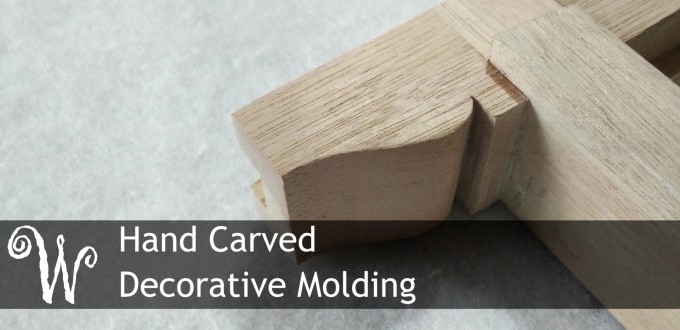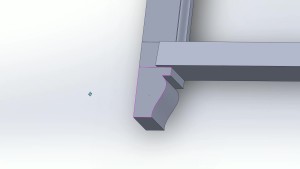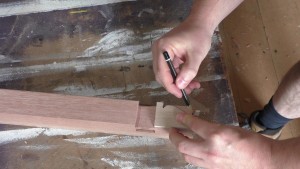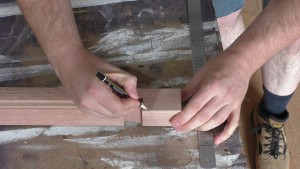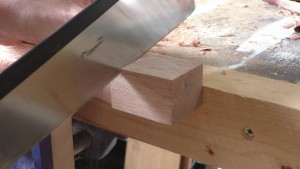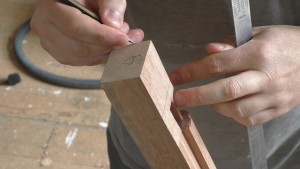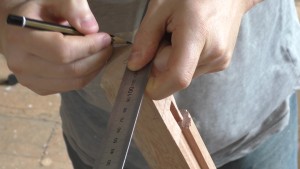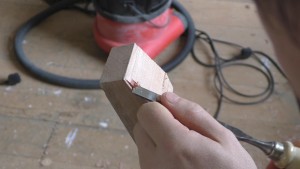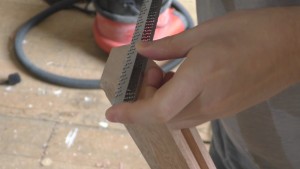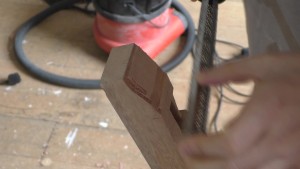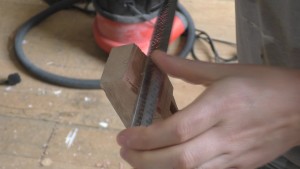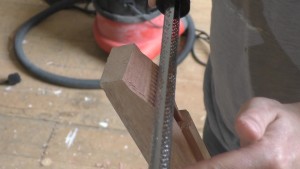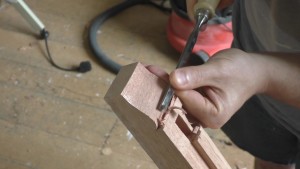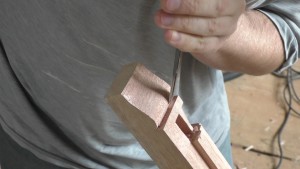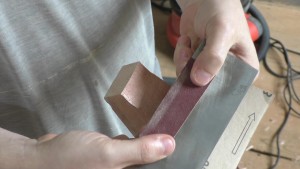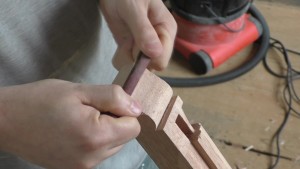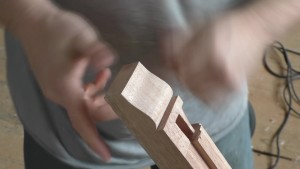Recently in the workshop I’ve been making sash windows for an extension we are having built. I haven’t documented the process yet as I have more windows still to build but I thought I’d capture one small aspect now – hand carving the decorative molding on the bottom of the stiles.
This molding, called a horn when found on sash windows, is there both as decoration and to strengthen the meeting rail to stile joint. The meeting rail is quite thin, 30mm in my case, and the glass quite heavy so this joint needs all the help it can get.
Old sash windows, before around 1830, didn’t have horns. This was because they used cylinder glass or other hand made glass sheets which were much thinner and lighter than float glass. With modern manufacturing we can now easily get 4mm window glass which would probably be light enough that horns aren’t needed but there’s a chance that one day these windows will have thin double glazing installed.
Since you will be carving at least two of moldings (and in my case a lot more than two) it’s worth taking the time to make a template but before you do that draw out the shape you want in your favourite CAD program. Drawing it first helps you to get the curve just right.
With the curve drawn print it out full scale, glue it to a scrap of ply and cut a template.
Place the template on the work and trace around it. Make sure you line up the bottom outside corner (the 90 degree corner) as this will set the overall size of the finished molding. Trace the outline on both sides of the stile.
Transfer the top shoulder marks to the face of the stile and join them together to give you a guild line.
Put the piece in the vice and cut the shoulder at the line just drawn.
Reorient the piece in the vice and draw a guide line across the bottom of the stile as you did for the top shoulder.
Using a fine toothed saw establish a cut across the bottom of the stile about the depth of the teeth of the saw.
Tilt the saw and cut off the bulk of the waste material. Getting the angle right can be tricky but don’t worry if it’s not perfect as the next step will clean up the molding with rasps anyway – it just means a bit of extra rasp work.
With the bulk of the waste removed it’s time to start defining the shape of the molding. Depending on the level of finish you want the next step is optional. The problem with a rasp is that it will usually cause breakout on the exit side of the work piece. This can be minimized or even totally eliminated by carving a few millimetres of the exit side down to the final profile first. It takes about two minutes to carve to the line so I think it’s well worth it.
Using a straight rasp establish a shoulder at the bottom of the stile and then repeat for the convex section of the molding.
Now use the straight rasp to remove as much of the waste material as you can from the concave area. The straight rasp can’t completely clean up the concave area but it’s faster and safer than the round rasp.
Now finesse the concave section with a round rasp until it is the shape you want. When using the round rasp make your strokes go sideways a little as well as forward and backwards as this helps to prevent grooves appearing the in the work.
When the lower section has been rasped to shape use a chisel to cut down each side for the upper curved section.
Using the same chisel pare off the waste going as deep into the V as possible.
Once you’ve pared off as much as possible cut away the final bits of waste in the V.
With a folded piece of sand paper sand the bottom of the V. The surface finish of this piece doesn’t have to be great as it will be painted but obviously if this carving is going to be on a piece of fine furniture you’ll want to take more care.
Next fold the paper over something thin and stiff like a cabinet scraper and clean up the convex area of the molding and the upper shoulder.
Finally make a sanding rod and clean up the concave area. Try to use forward and backward strokes along the grain direction to get the best finish.
Take a couple of light strokes up the corners to break them. Paint doesn’t like sharp edges and you’ll want windows to last as long as possible between paintings.
Vacuum off the dust and inspect your work.
